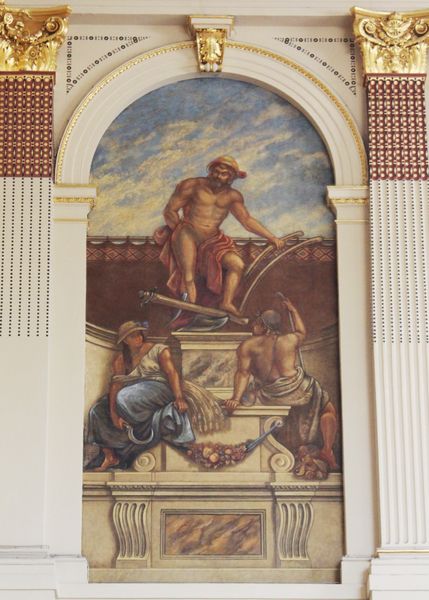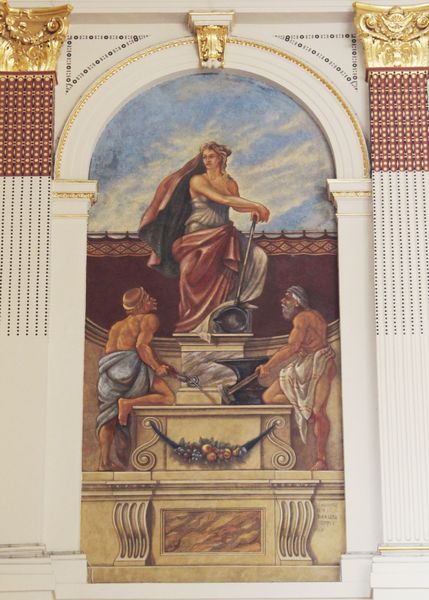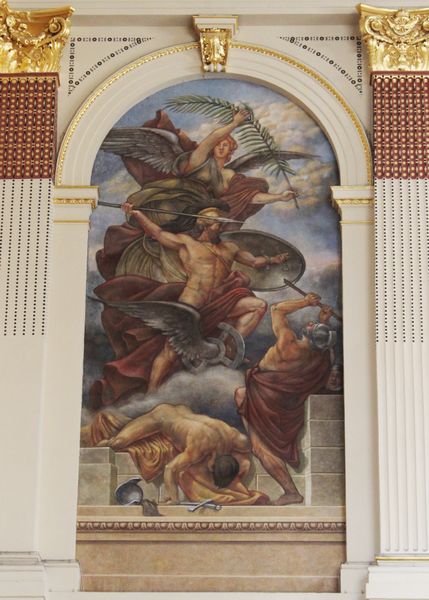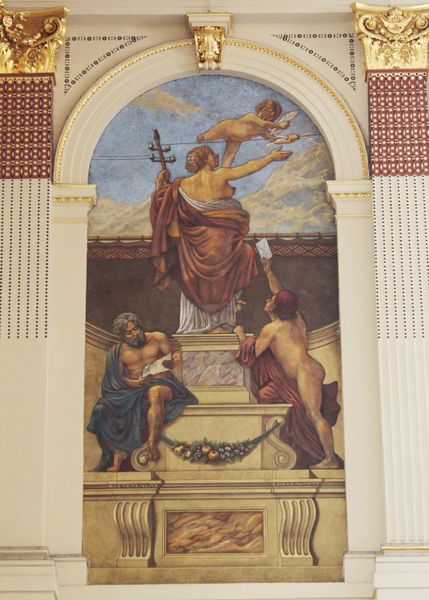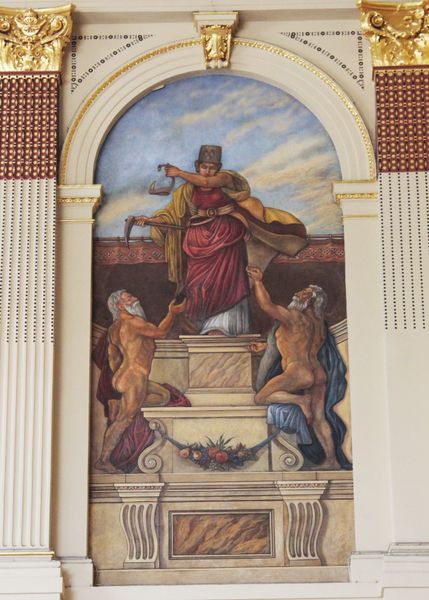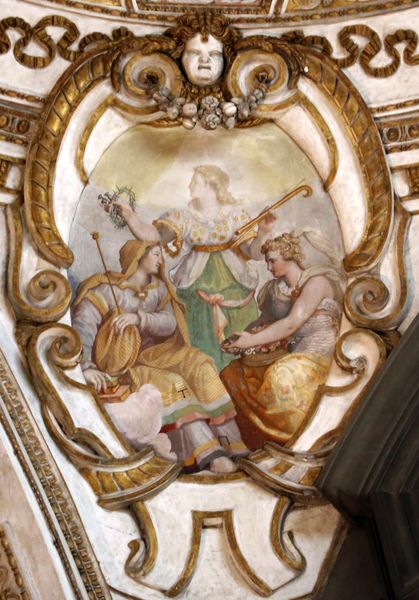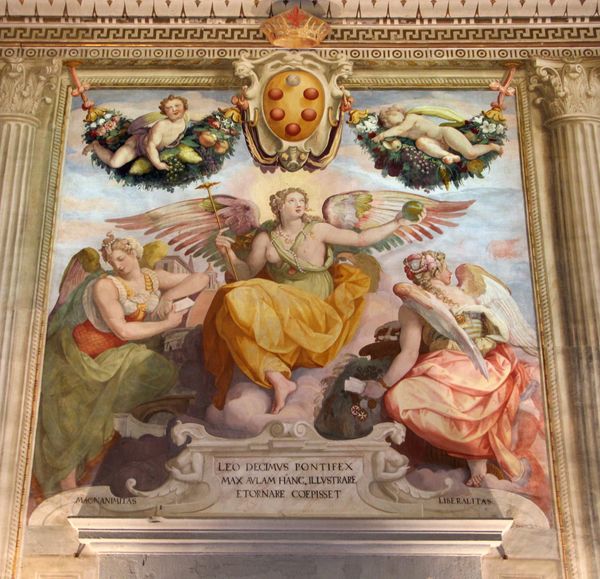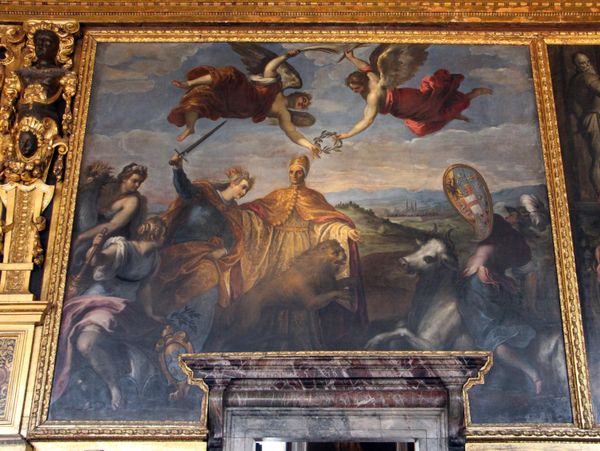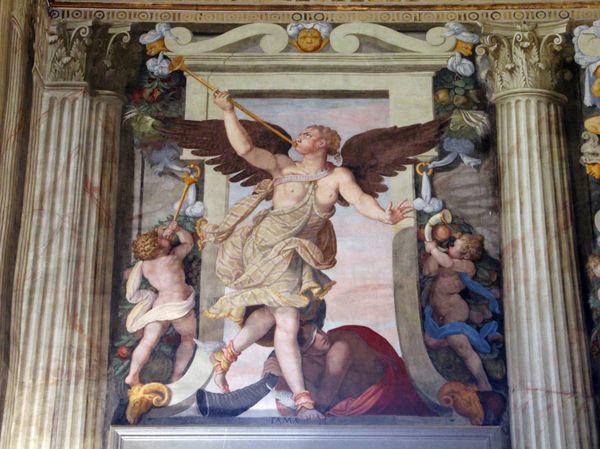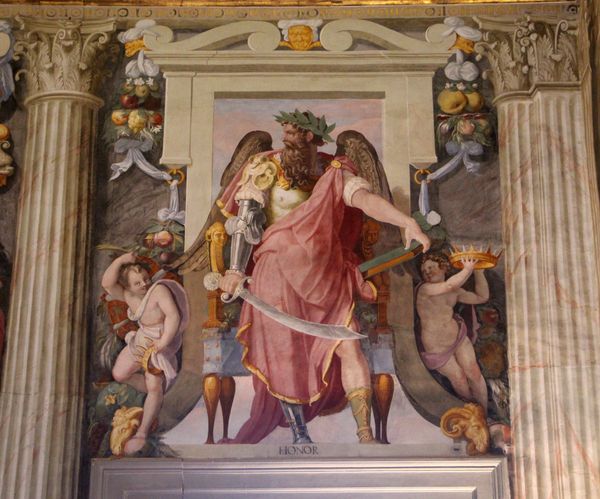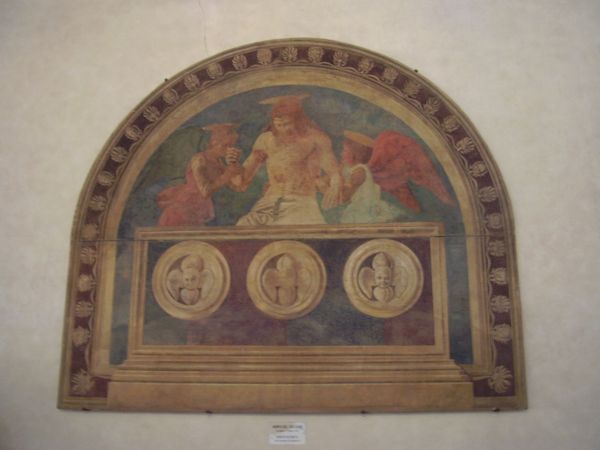
Copyright: Public domain
Károly Lotz's mural, Abundance, is painted directly onto the wall using traditional fresco techniques. This meant applying pigments to wet plaster, a process demanding speed and precision. The mural's appearance is intimately tied to the fresco method. The colors have a soft, muted quality because they chemically bind with the plaster as it dries. This creates a remarkably durable image, but it also requires the artist to plan carefully, as corrections are difficult. Lotz, like many muralists, likely employed assistants to mix pigments and prepare the wall surface. The allegorical subject of Abundance reflects the context of its creation, in the late 19th century when large-scale decorative schemes were commissioned to project civic pride. The very act of creating such a mural – the labor of preparing the wall, mixing the plaster, and applying the paint – speaks to the social and economic values of the time. Considering the materials, making, and context of Abundance invites us to appreciate the skills of the artist and artisans involved in its production, and how these skills and traditions can be seen as integral to the artwork's meaning.
Comments
No comments
Be the first to comment and join the conversation on the ultimate creative platform.
